When one thinks of the city of San Remo, the association of ideas with the two reasons for which it is famous, namely the Italian Song Festival and the Casino, is almost natural. But San Remo is not only the San Remo Festival, nor is it only the Casino, and it is not even only linked to the good life of the late nineteenth century, when the Riviera town was already a destination for international tourism, especially from northern Europe (so much so that there is even a “Corso degli Inglesi” in San Remo, which therefore also in the odonomastics reminds us of how strong the international presence in the area was). San Remo in fact has ancient origins: the first settlement, the town of Villa Matutia, has Roman origins (the Sanremaschi, or Sanremese, are moreover also known as “matuziani”). The name of the town itself derives from the dialectal name of the bishop of Genoa who evangelized the local population between the 4th and 5th centuries, and who curiously enough was called Saint Romulus (San Römu in Ligurian): a village already existed at that time, although the first certain attestations date back to the end of the 10th century (a document from 979 speaks of a castrum Sancti Romuli).
Consequently, given the antiquity of the city, which today is sharply divided into two parts (the ancient village, la Pigna, perched on a hill, and the modern, nineteenth-century city that stretches along the marina), there are also several ancient testimonies that art enthusiasts can find in the city. As is typical of our “five places in two days” travel format, for San Remo we offer here a list of five sites to visit in a weekend or short stay in the city.
 |
| View of San Remo |
This is the oldest part of the city, clinging to the hill above it, also called “Old San Remo” by some: the picturesque neighborhood opens up to the right of Via Palazzo and is a labyrinth of alleyways that lead up to the top of the rise, from which it overlooks the modern city and the Riviera as far as the neighboring municipalities. The name Pigna refers to the conformation of the built-up area: narrow alleys that run between tall houses often with sections in the dark inside real tunnels, arranged in concentric rings around the steep hill (a “sugar loaf” Charles de Brosses had called it in the eighteenth century precisely because of its shape), make the village resemble a pine cone. The village had taken on this structure, as happens throughout Liguria, for defensive reasons, since in the Middle Ages the Ligurian coast was subject to raids by Saracen pirates. Sites to visit include the oratory of San Sebastiano, which was built in 1502 as a vow for the town’s deliverance from a plague, the 17th-century church of San Giuseppe (Pigna’s largest house of worship, with an interesting Baroque interior, some curious stucco rosettes frescoed on the vaults, a large 16th-century crucifix, and a sarcophagus repurposed as an altar, as is often the case in old churches), and the Manara Palace, which is said to have hosted Pope Paul III during one of his trips to Nice.
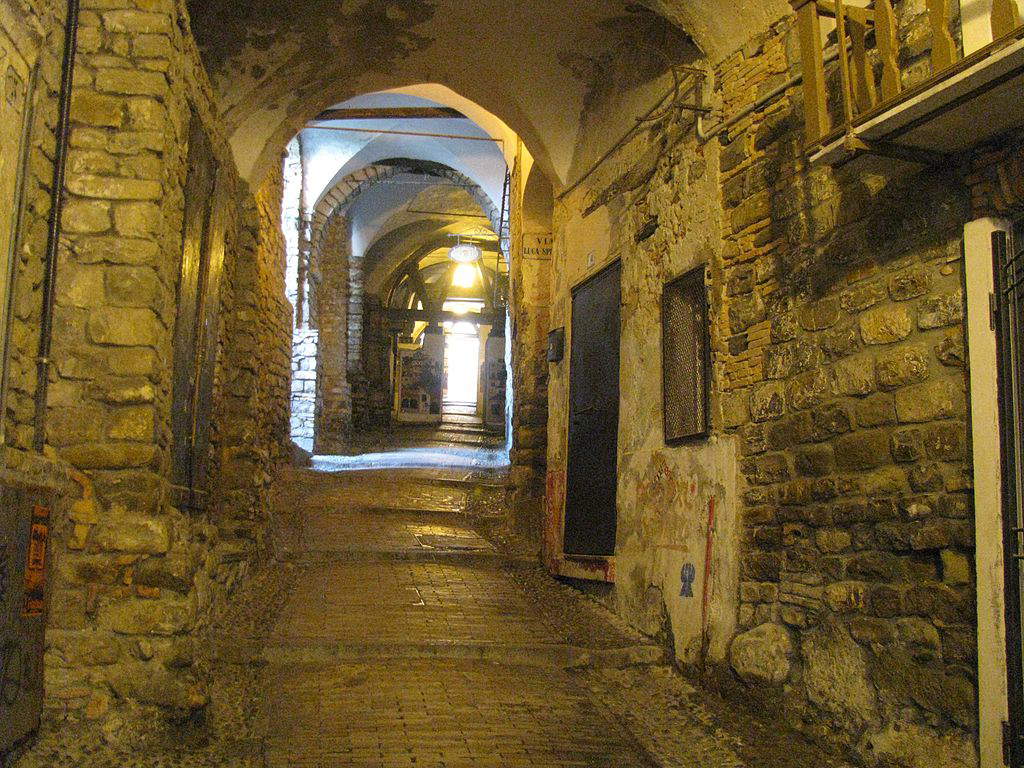 |
| La Pigna. Ph. Credit |
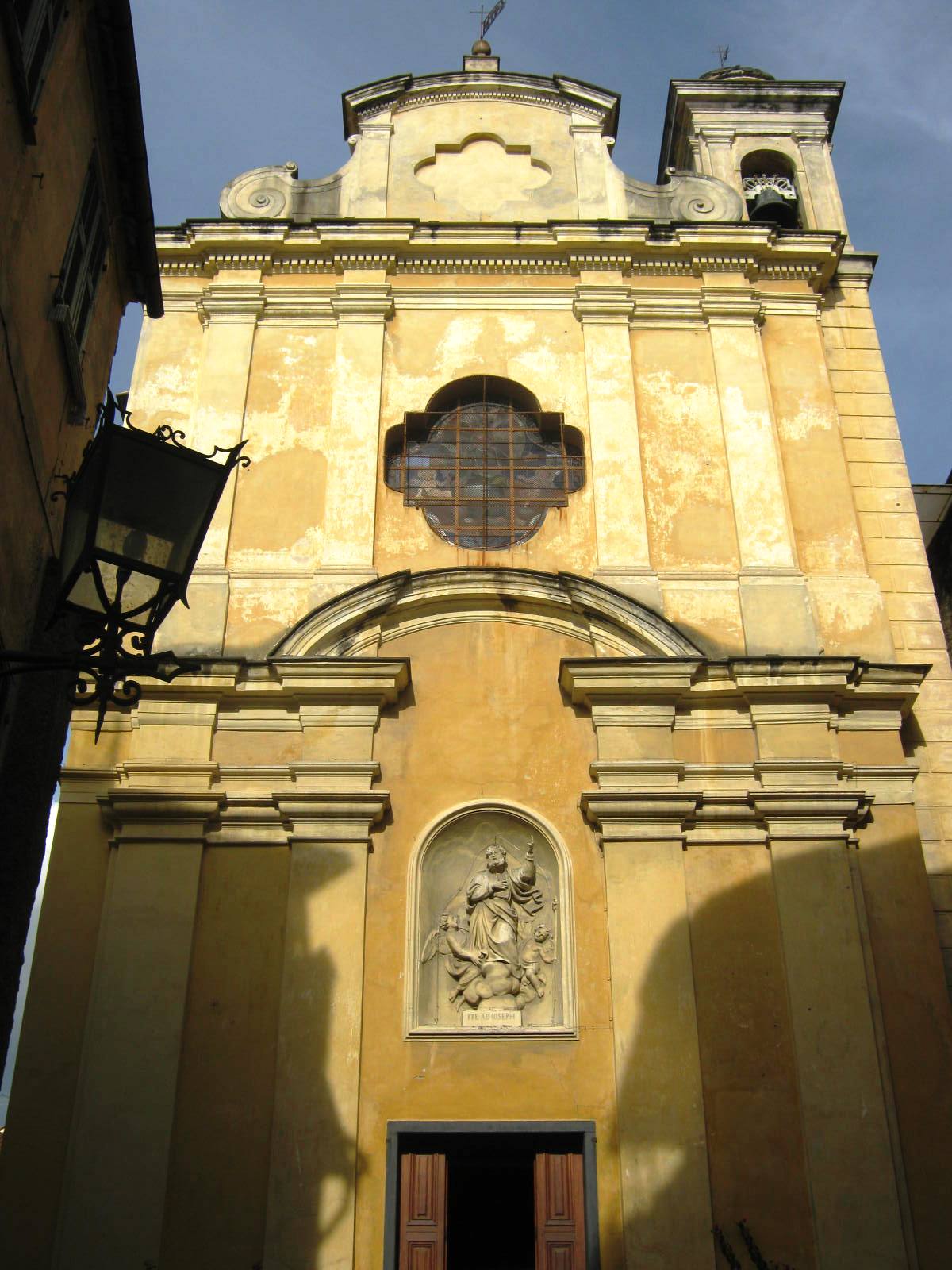 |
| La Pigna. Ph. Credit |
It is located on a knoll overlooking the La Pigna neighborhood (you can get there on foot through the medieval quarter, or via the road that runs alongside): dating from between the 14th and 15th centuries, today the Sanctuary of the Madonna della Costa is presented in its 17th-century appearance (it was in fact rebuilt in 1630 thanks to the work of a sailor who, having saved himself from Saracen pirates, raised the sums to erect a new sanctuary, attributing the miracle precisely to the table of the “Madonna della Costa” preserved here). Tradition has it that the church was built after 1361, the year in which the castle of San Remo was ceded by the Dorias to the Republic of Genoa, a fact that gave rise to the “festa delle catene,” an event held annually until 1824 to celebrate the city’s liberation from the yoke of the Dorias. However, the shrine is not mentioned for the first time until 1474. The “Madonna of the Coast” is a late Gothic panel painting attributed to Nicolò da Voltri, placed above the high altar, and several other important works adorn the shrine: four wooden statues by Anton Maria Maragliano, a Vision of Saint Hyacinth by Domenico Fiasella, a Beheading of the Baptist by Giulio Cesare Procaccini, and a Visitation by Bartolomeo Guidobono.
 |
| The Shrine of Our Lady of the Coast. Ph. Credit Georges Jansoon |
 |
| The Sanctuary of the Madonna della Costa. Ph. Credit Davide Papalini |
San Remo Cathedral has very ancient origins: in fact, the current structure dates back to the 12th century, when the first Romanesque-Gothic cathedral was built. However, the building was heavily remodeled between the seventeenth and eighteenth centuries: in 1745 the cathedral was in fact bombed, resulting in the collapse of the façade and part of the roof, and in 1753, after San Remo’s revolt against the Republic of Genoa, the bell tower was destroyed, then later rebuilt in Baroque style. The church had also been renovated, and until 1901 it could still be admired in its seventeenth-century appearance: that year, however, massive works were begun that dismantled the Baroque alterations to restore the church to an appearance similar to what it must have had originally. The work was completed in 1948. Inside, however, the ancient parts that were not destroyed or modified over the centuries can still be seen. As for the bell tower, it was decided instead to keep the 18th-century one. The interior also houses two important works by Maragliano: a crucifix and a Madonna del Rosario.
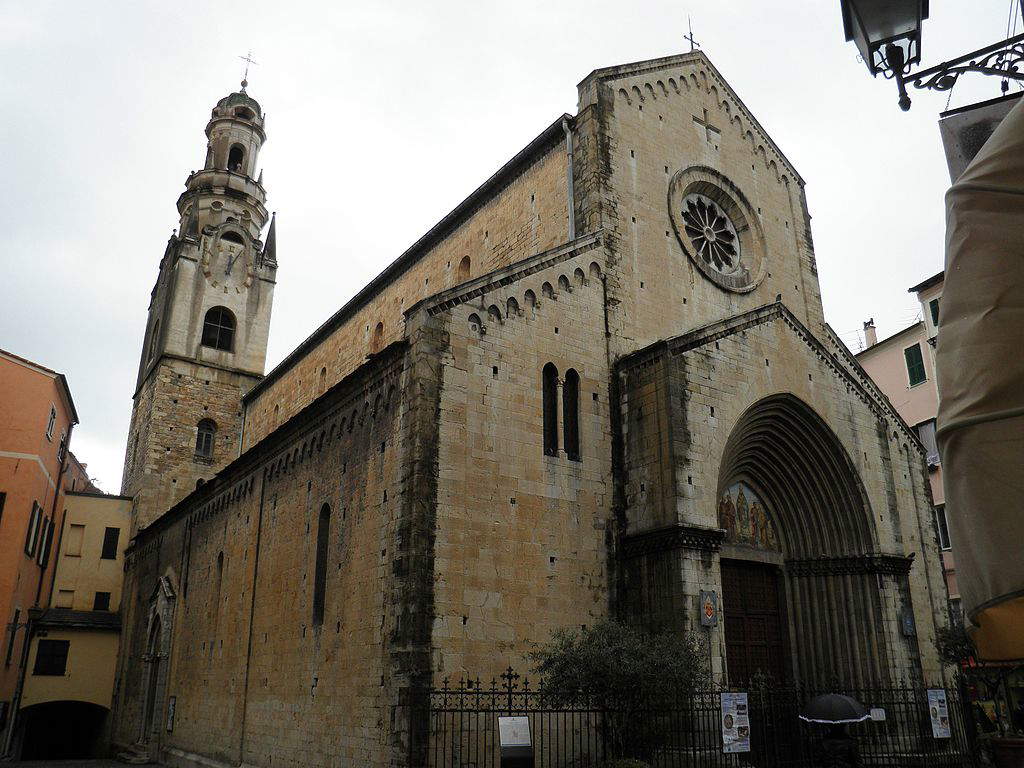 |
| The Cathedral of San Remo |
This is the city’s most important picture gallery, and it is housed in Villa Luca, an elegant building located in the hamlet of Coldirodi, on the heights surrounding Sanremo (it can be reached by a journey of about ten minutes from the city center). The Pinacoteca was established in 1865 and grew out of the collection of Father Paolo Stefano Rambaldi (Coldirodi, 1803 - Florence, 1865), which in 1865 was purchased by the municipality of Colla (Coldirodi’s former name, today no longer an autonomous municipality but, as mentioned, a hamlet of Sanremo). The seventeenth-century nucleus is especially important: there are works by Jacopo Vignali(The Holy Family in domestic chores), a version of the very famous Temptations of St. Anthony by Salvator Rosa, a rock landscape also by Salvator Rosa, a Holy Family by Onorio Marinari, and then more works by Giacinto Gemignani, Livio Mehus, and Mario Balassi. The sections devoted to still lifes and landscapes are also rich. Other works include a Madonna and Child traditionally attributed to Lorenzo di Credi, a Holy Family attributed to Fra Bartolomeo, a splendid Madonna and Child, St. Catherine and St. John of the Titian school, and anEcstasy of St. Francis by Jacopo Ligozzi. The Rambaldi Picture Gallery(official website here) also houses Father Rambaldi’s substantial library.
 |
| The Rambaldi Picture Gallery in Coldirodi |
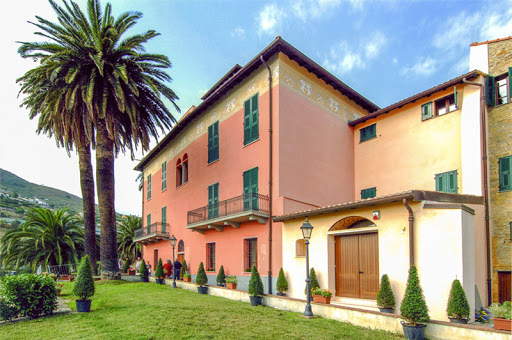 |
| The Rambaldi Picture Gallery in Coldirodi |
Formerly housed in Palazzo Borea d’Olmo, the Civic Museum(website here), since December 30, 2016 has instead been welcoming the public to Palazzo Nota, a splendid 18th-century building in downtown San Remo. It is the place to discover the history of the oldest San Remo: in fact, this is where the rich archaeological section is located, where the oldest evidence of the area is kept, starting from prehistory. The second floor of the museum also houses a rich picture gallery, with works that focus mainly between the 18th and 19th centuries (there are also two works by Giacomo Grosso). An entire room is dedicated to the cartoonist Antonio Rubino, who lived between 1880 and 1964: he was one of the first Italian cartoonists, and the room devoted to him traces his career with paintings, theaters, drawings, sketches, and set designs.
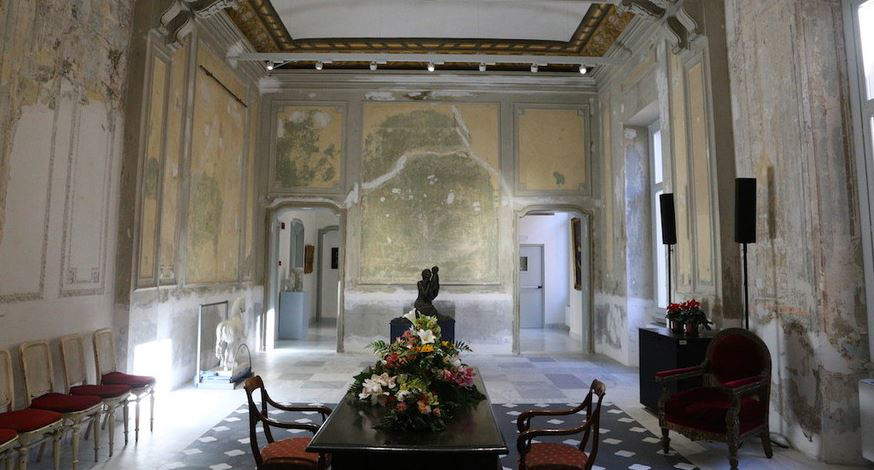 |
| The San Remo Civic Museum |
 |
| Ancient art in San Remo: five places to see in the city, in two days |
Warning: the translation into English of the original Italian article was created using automatic tools. We undertake to review all articles, but we do not guarantee the total absence of inaccuracies in the translation due to the program. You can find the original by clicking on the ITA button. If you find any mistake,please contact us.